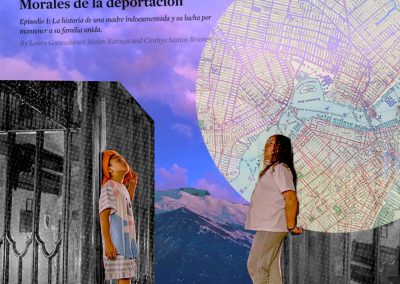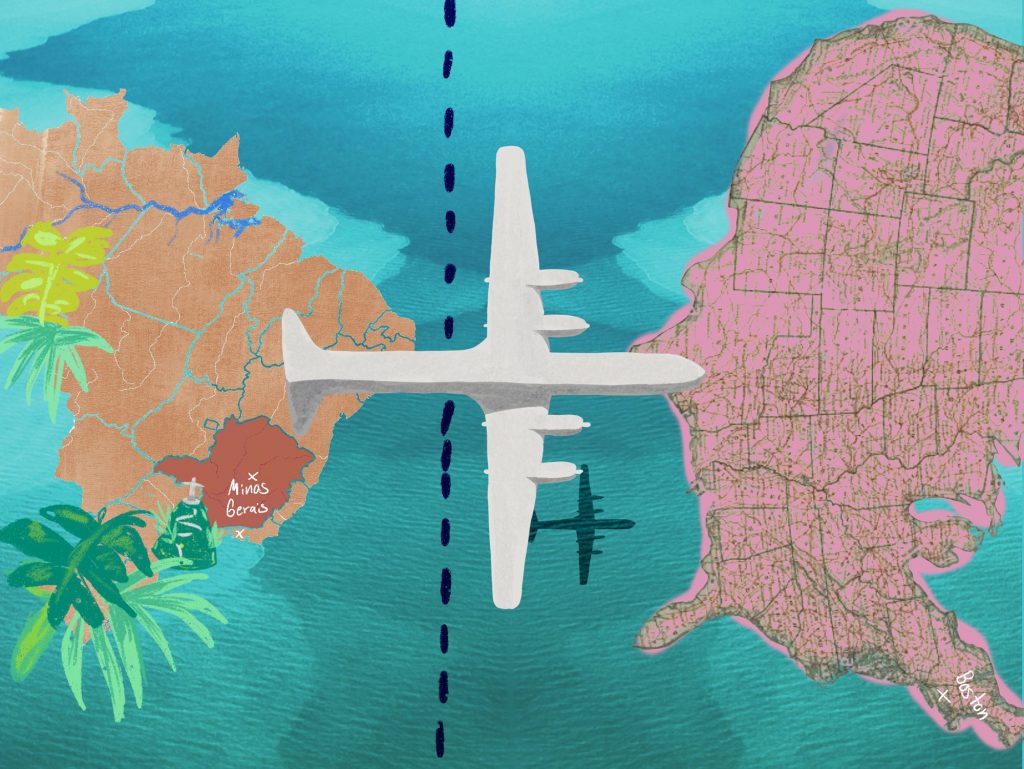Children on the Move
AN ETHNOGRAPHIC MOSAIC OF THE AMERICAS
This mosaic-kaleidoscope is an ethical and political approach to demonstrate and assert that without taking into account children and adolescents, it is impossible to begin to understand the global phenomenon of migration in today’s world. This kaleidoscope is also a reaction and a stance against the historic inequalities that drive these children and adolescents out of their communities. This work is a demand for greater empathy for them when they must leave in search of their parents or other relatives; and a gesture of solidarity when they flee to build a new, alternative life. Migrant children and adolescents on the move, challenge our preconceptions regarding childhood, innocence, maturity, dependence, geographic distance, and time. For this reason, this multimedia project is also a proposal to transform research methods on migrant children and adolescents, to empower them, and share their knowledge and experiences.
We believe child and adolescent migration is an act of emancipation and rebellion against oppressive and violent regimes throughout the American continent. Thus, we also think their movement urges us to reflect on today’s world, to build societies where borders are not walls that separate us, but instead are spaces to meet, recognize each other and learn.
How to capture the diversity and complexity of the lives of children and adolescents in the Americas? How to connect unique experiences in apparently distant and unrelated spaces and times? What does the life of a Venezuelan migrant have in common with the lives of an Ecuadorian boy, a Mexican boy, a Brazilian girl, a Salvadoran boy, a Honduran boy, a Mixteco Indian boy, or a Mexican-American girl?
What does migration mean to them? What is to them the meaning of borders and of being a migrant?
What games do they play? Who takes care of them? How do they grow-up in the absence of their fathers and mothers who migrated? How do they live in a language alien to them? How do they take ownership, adapt, and transform the societies that have called them “illegal”? Where do they seek refuge? How do they develop their own political awareness? How do they fight for their rights? Who supports them?
What do they imagine? What are their memories made up of? How do they cross and draw the continent’s geography as migrant children and adolescents?
What does all this tell us about current migration in the hemisphere?
The search for answers to these and other questions drives this collective and trans-disciplinary project. The project transformed into a patchwork of media sharing the experiences of migrant children and adolescents in the continent. Its uniqueness lies in its creation from a variety of elements constructed with different voices and experiences, and from diverse places. Like in any patchwork, each part is unique and helps develop and give sense to the whole.
The stories of these children and adolescents form this single whole. Each narration has a rhythm and uniqueness of its own; each diagram, drawing, map, or photo has a unique meaning, and each representation reveals geographical and historical realities that, though unparalleled, are at the same time part of a complexwhole, of children and adolescents on the move. For these reasons, the creation of this patchwork-kaleidoscope was possible.
This project was made possible through the support of the National Geographic Society to Colectiva Infancias, a transnational research network. The group was created in 2015 by women anthropologists, psychologists, geographers, education specialists, and documentary photographers. For many years, we have worked with children and adolescents and their families in different places in the Americas.
The multimedia presentation Children on the move: an Ethnographic Patchwork of the Americas aims to make accessible to wider audiences research on children and adolescents that show child migration as a historical and political process central to the dynamics of continental migration. We advocate child migration should be studied and understood as a phenomenon on its own, and not merely as a subsidiary aspect of adult migration.
The main goals of this project are the following: first, to highlight the lives and experiences of children and adolescents to acknowledge their theoretical, political, and social worth. Second, to work together with children and adolescents to transform academic research findings into tools, materials, and products in such a way that they may resound with a broad and diverse public. The effect we’re looking for is to go beyond the mere production of knowledge.
We think that criminalization and punishment policies towards migration affect children and adolescents disproportionately. There is also an inequitable distribution of resources and spaces that acknowledge their knowledge and experiences, and the ways they represent and construct a narrative about themselves. Other questions stemming from this inequitable distribution of power include how children and adolescents on the move question the hegemonic powers of society and denounce what happens to them and, finally, how they develop just and dignified alternative realities for themselves and their families. This project seeks to make a small contribution to the fight tocombat the inequalities children and adolescents face when trying to represent themselves, and provide a medium for their voices to be heard.
We recognize and defend migration as a right. We believe that guaranteeing the right to move, in particular for children and adolescents, is essential to build livelihoods and possible alternative movement in the continent. Children and adolescents flee violence in their home communities. They leave in search of their parents and other relatives. They cross borders to try and rebuild their lives in different spaces. These facts are acts of emancipation and rebellion against oppressive and violent regimes.
Ours is an effort to assume an ethical, political, and methodological stance, a way of doing research intended to pursue involvement in social phenomena and dynamics, not only to observe and study them. Accordingly, from the beginning of this project, we asked ourselves not only how to investigate and document, but how to support and build solidarity and hospitable spaces, and build spaces of commitment and action with those who travel the various dimensions of child migration, mainlytheir causes and effects.
This multimedia presentation is not neutral to pain, oppression, and suffering inflicted on children and adolescents, whose lives are disrupted by dynamics and processes we seek to understand and document. The research effort will focus on the experiences and knowledge of persons who have always had a voice, but historically have not been heard and have had little chances for self-representation.
With these ideas as building-blocks, the patchwork intends to highlight, with a critical lens, the following migration dynamics:
- Children and adolescents who accompany their mothers in seeking sanctuary in churches in New York as a defense strategy against the threat of deportation.
- Venezuelan children and adolescents displaced along the border with Colombia.
- Children and adolescents that have returned from the United States to their parents’ home communities in Mexico.
- Migrant Mexican indigenous persons and workers that live within various borders in one single territory.
- Central American children and adolescents who between 2018 and 2019 joined migrant caravans as a mobility and protection strategy.
- Children and adolescents from communities in the Ecuadorian Andes, sons and daughters of immigrants in the United States that grow in the absence of their parents, minded by their caregivers.
- Brazilian children and adolescents that move from legal to illegal migrant status and their experiences in school.
This multimedia presentation emerges at a time duing which the involvement and leadership of migrant children and adolescents run the risk of being understood only through violent and potentially traumatic processes of detention, family separation, or deportation, among others.
Recognizing these realities is essential. However, this patchwork project documents and reflects the dynamics and spaces that allow children and adolescents to weave and sustain their daily lives. The project explores and highlights the circumstances that let them grow and re-create themselves using their own experiences and knowledge not determined by violence or victimization. In every experience and context of violence, subjection, and death they have had to endure, they show their ability to produce and reproduce bonds of love, solidarity, trust, support, and emancipation. These are emotional, social, and political bonds crucial to sustaining their families’, communities’, and societies’ vital ties, and to develop new possibilities for the future.
In Colectiva Infancia, we hope this research effort helps to open new horizons in conversation and action throughout the American continent, and strengthen the work on migrant children and adolescents, and, ultimately, serves in some way to defend their rights.















